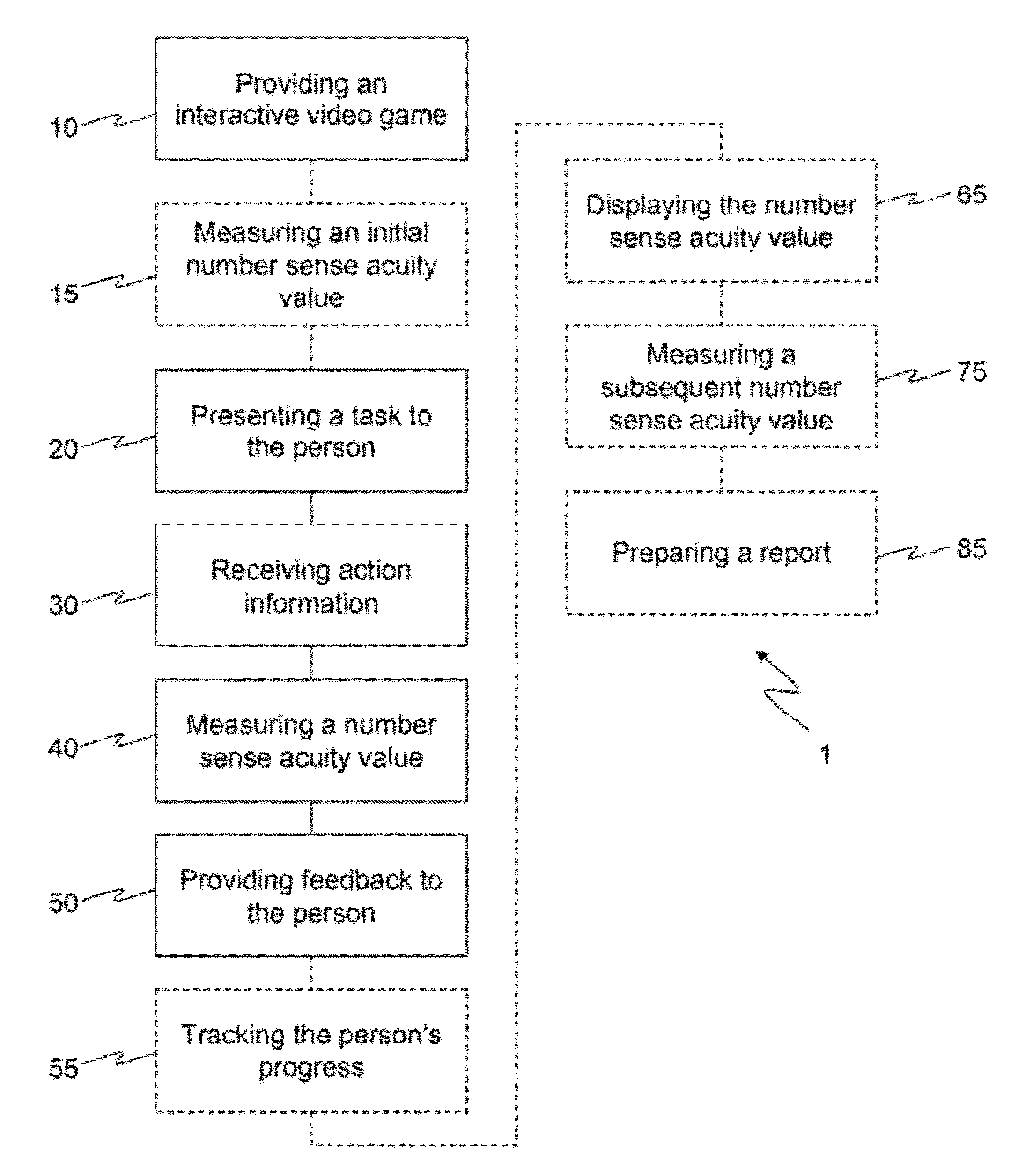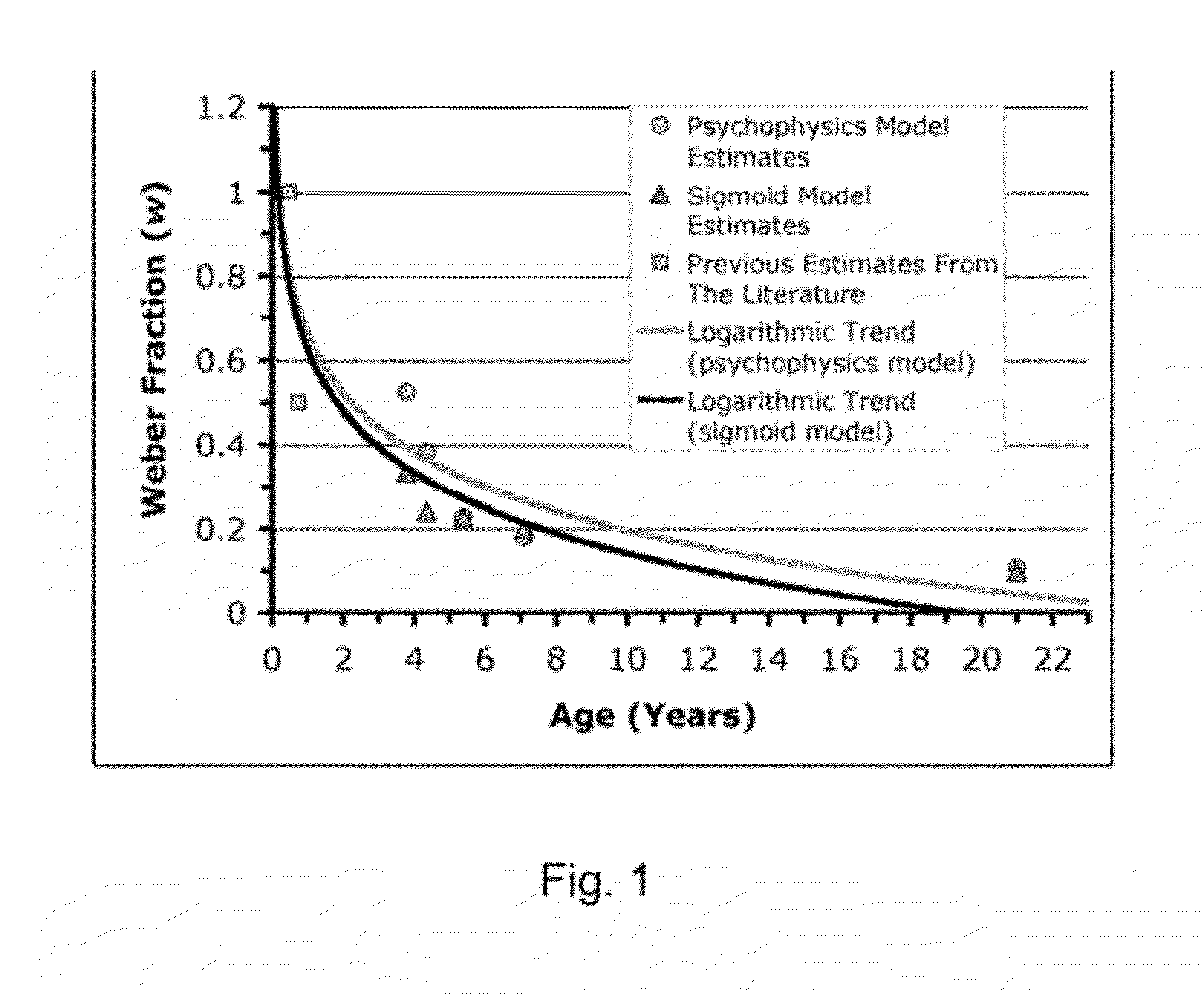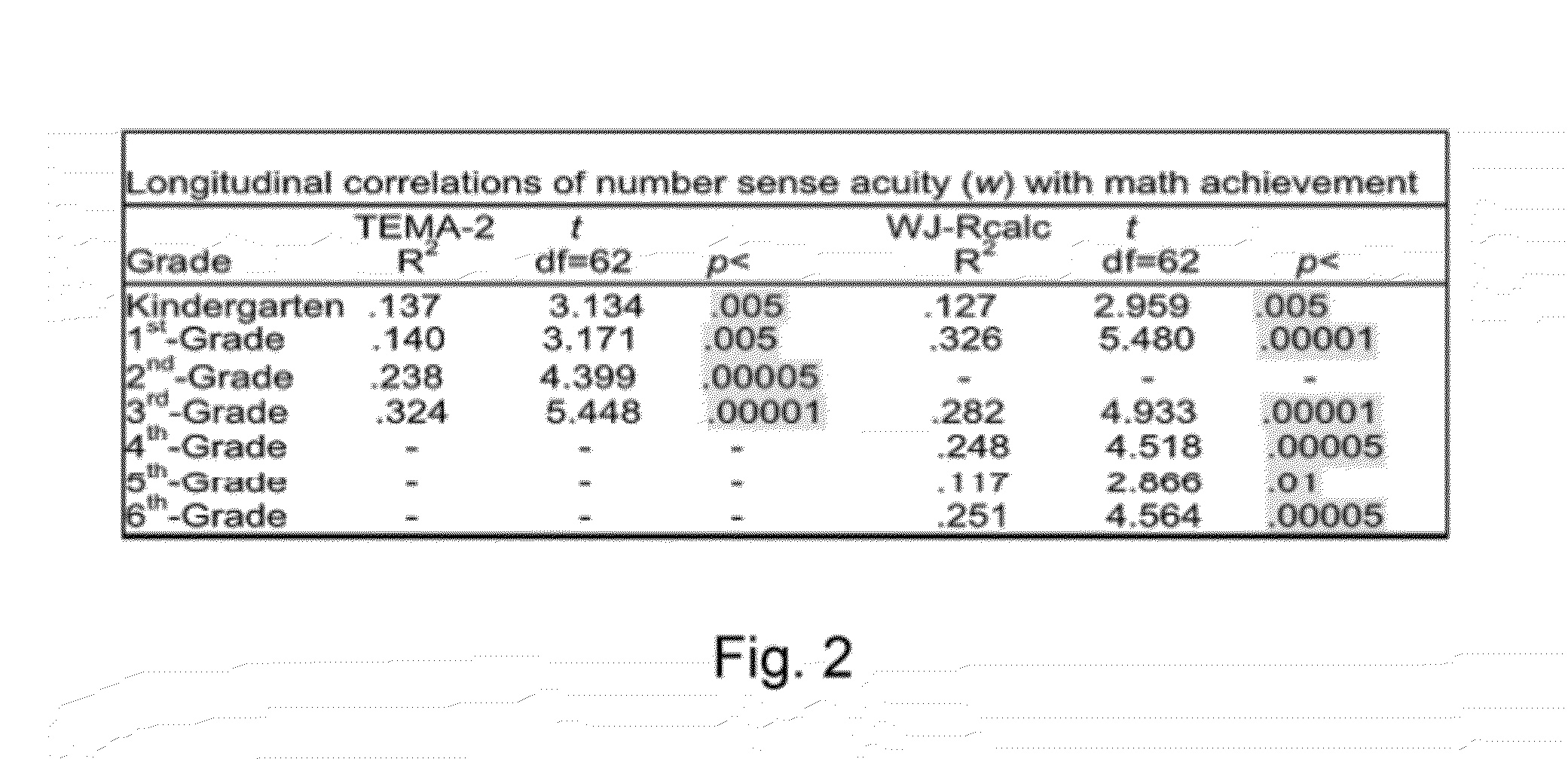Method and System for Training Number Sense
a number sense and number sense technology, applied in the field of training number sense, can solve the problems of individual differences in the acuity of the number sense, inability to know the right thing to do, and slow and more error-prone, and achieve the effect of slow cognitive declin
- Summary
- Abstract
- Description
- Claims
- Application Information
AI Technical Summary
Benefits of technology
Problems solved by technology
Method used
Image
Examples
Embodiment Construction
[0050]FIG. 6 depicts a method 1 of training a player to improve their number sense acuity according to an embodiment of the present invention. The player may be of any age.
[0051]While examples in this disclosure may refer to children, it should be understood that the disclosure is applicable to any age. The method 1 comprises the step of providing 10 an interactive video game. The interactive video game may be embodied as software for execution by a processor, as a processor dedicated to executing interactive video games, or as any combinations of software and hardware. The interactive video game may have one or many environments that can be experienced by the player through an avatar. For example, the video game may be a so-called “first-person action” (FPA) video game, where the video game is played form the point-of-view of the avatar. The player can control and manipulate the avatar. The player may command the avatar to act, for example, to move, observe, or perform a variety of...
PUM
 Login to View More
Login to View More Abstract
Description
Claims
Application Information
 Login to View More
Login to View More - R&D
- Intellectual Property
- Life Sciences
- Materials
- Tech Scout
- Unparalleled Data Quality
- Higher Quality Content
- 60% Fewer Hallucinations
Browse by: Latest US Patents, China's latest patents, Technical Efficacy Thesaurus, Application Domain, Technology Topic, Popular Technical Reports.
© 2025 PatSnap. All rights reserved.Legal|Privacy policy|Modern Slavery Act Transparency Statement|Sitemap|About US| Contact US: help@patsnap.com



